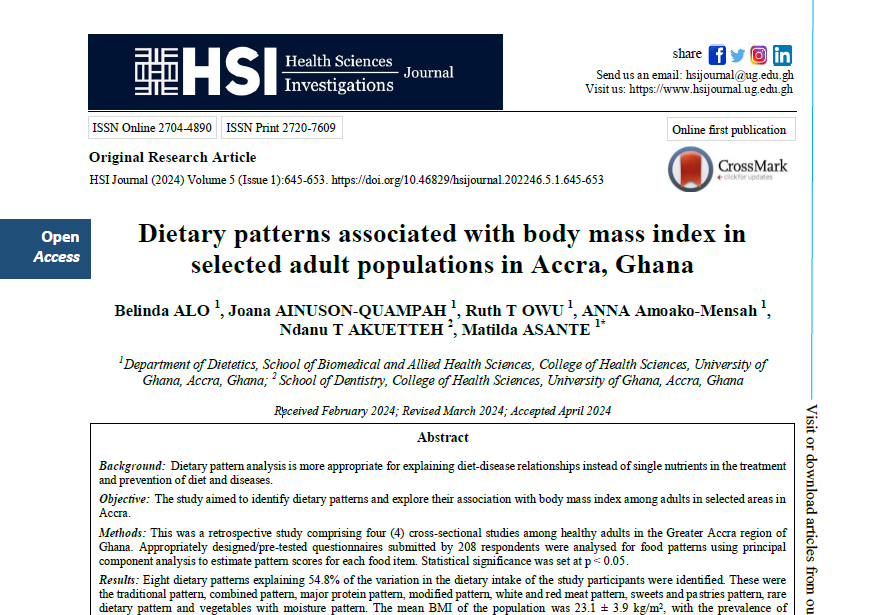Dietary Patterns Associated with Body Mass Index in an Adult Population in the Greater Accra Region of Ghana
Abstract
Background: Dietary pattern analysis is more appropriate for explaining diet-disease relationships instead of single nutrients in the treatment and prevention of diet and diseases.
Objective: The study aimed to identify dietary patterns and explore their association with body mass index among adults in selected areas in Accra.
Methods: This was a retrospective study comprising four (4) cross-sectional studies among healthy adults in the Greater Accra region of Ghana. Appropriately designed/pre-tested questionnaires submitted by 208 respondents were analysed for food patterns using principal component analysis to estimate pattern scores for each food item. Statistical significance was set at p < 0.05.
Results: Eight dietary patterns explaining 54.8% of the variation in the dietary intake of the study participants were identified. These were the traditional pattern, combined pattern, major protein pattern, modified pattern, white and red meat pattern, sweets and pastries pattern, rare dietary pattern and vegetables with moisture pattern. The mean BMI of the population was 23.1 ± 3.9 kg/m2, with the prevalence of underweight, normal weight, overweight and obese observed to be 5.8%, 68.3%, 19.7%, and 6.2%, respectively. The traditional dietary pattern and the sweets and pastries patterns were significantly associated with BMI (p < 0.05 and p ˂ 0.001, respectively).
Conclusion: Eight (8) dietary patterns were identified. The traditional sweets and pastries patterns were found to be related to weight gain.


